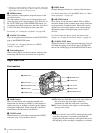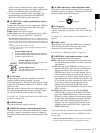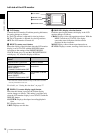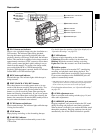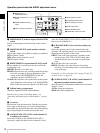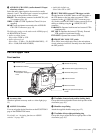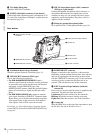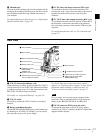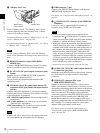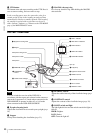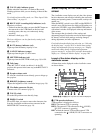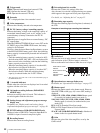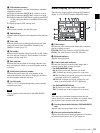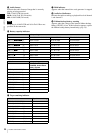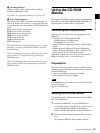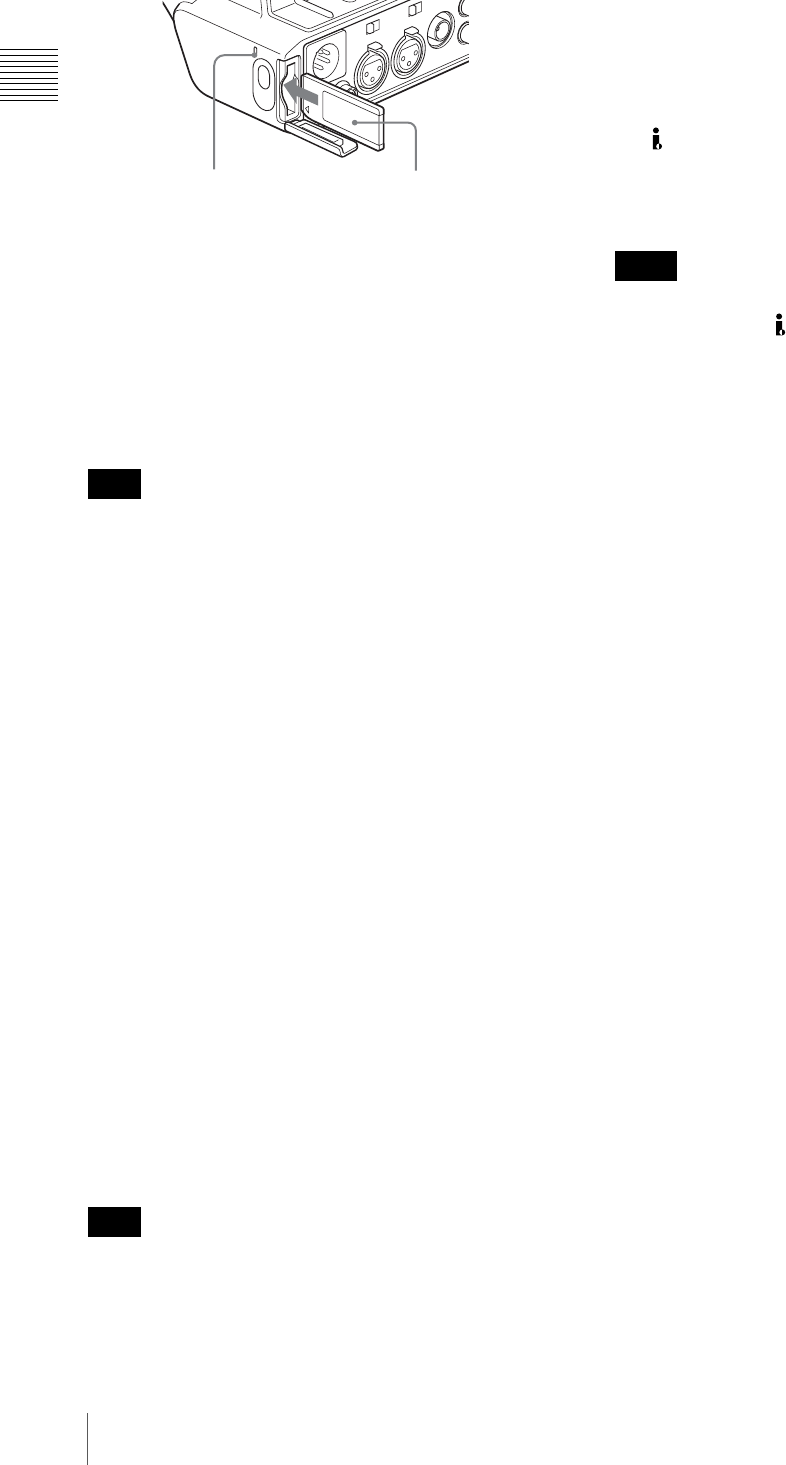
18
Location and Function of Parts
Chapter 1 Overview
e “Memory Stick” slot
Insert a “Memory Stick”. The “Memory Stick” access
indicator lights up when the “Memory Stick” is being
accessed for reading or writing.
For details about how to insert a “Memory Stick”, see “To
insert a “Memory Stick”” on page 109.
For details about the types of “Memory Stick”, see “About
a “Memory Stick”” on page 123.
Do not remove a “Memory Stick” while the “Memory
Stick” access indicator is lit. Doing so may cause a loss of
data.
f REMOTE connector (8-pin) (DSR-450WS/
450WSP only)
Connect a RM-B150/B750 Remote Control Unit, which
makes it possible to control the camcorder remotely.
g DC OUT 12 V (DC power output) connector (4-pin,
female)
Supplies power for a WRR-861/862 UHF Synthesizer
Tuner (optional) (maximum 0.2 A).
Do not connect any equipment other than the UHF
synthesizer tuner.
h AUDIO IN CH-1/CH-2 (audio input channel 1/2)
connectors (XLR-3 pin, female) and input selection
switches
Connect other audio equipment or external microphone.
Set the input selection switches as shown below according
to the microphone or equipment.
MIC +48V ON (right position): For connecting to a 48 V
microphone
MIC (center position): For connecting any microphone
other than 48 V microphone
LINE (left position): For connecting an external audio
signal source such as a stereo amplifier
If MIC +48V ON is selected for a microphone other than
48 V microphone, the microphone may be damaged.
i WRR connector (7-pin)
Connect a CA-WR855 Camera Adaptor with attached
WRR-855 UHF Synthesizer Tuner.
For details, see “Using a wireless microphone system” on
page 35.
j (i.LINK) DV OUT connector (6-pin, IEEE1394
compliant)
Connect to a device supporting the DV format or a
computer, using i.LINK cable (DV cable).
• If video and audio signals from an external device
connected to the
(i.LINK) DV OUT connector are not
output, disconnect the i.LINK cable (DV cable) and then
reconnect it, making sure that it is firmly seated.
• When you connect the camcorder and other equipment,
such as a hard disk drive, with an i.LINK interface to a
computer with i.LINK connectors, turn off the power of
the computer, the other equipment, and the camcorder
before connecting them using the i.LINK cable (DV
cable). If a bus-powered type* hard disk drive or similar
equipment is connected while the computer is powered
on, electric current flows into the camcorder because of
the high voltage caused by the load shift of the computer
power, and this may cause a malfunction.
* Equipment that can be powered through i.LINK cable (DV cable)
k AUDIO OUT CH-1/CH-2 (audio output channel 1/
2) connectors (pin jacks)
Output the sound being recorded or played back. Connect
to a stereo amplifier or video monitor’s audio input
connectors.
l VIDEO OUT connector (BNC type)
(DSR-450WS/450WSP only)
Outputs a composite video signal for a video monitor.
With a video monitor connected to this connector, you can
monitor the picture being shot by the camera or the picture
played back by the VTR. When synchronizing the time
code of an external VTR with that of the camcorder,
connect this connector to the GEN LOCK IN connector of
the external VTR. By installing the CBK-SD01 SDI
Output Board (optional), you can output an SDI signal
(supporting embedded audio and the EDH function) from
this connector. To switch the composite video signal
output to SDI signal output, use the menu.
For details on how to select the output signal, see
“Selecting the output signals (DSR-450WS/450WSP
only)” on page 104.
Note
Note
“Memory Stick”
access indicator
“Memory Stick”
Notes



